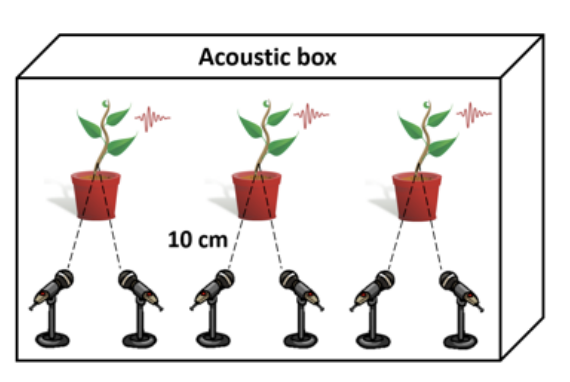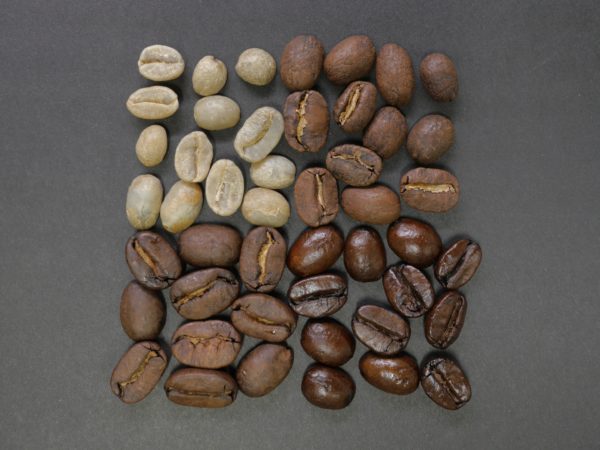Aaaah – 😱
Our last post was from almost 6 months ago! I tend to underestimate the amount of work it takes to put together a polished post. What ends up happening is I’ll have a general topic I want to write about and then I’ll spend HOURS reading all these extremely niche papers on acoustical properties of food before I write a single word.
I know I’m making excuses but I have been wanting to write about CRUNCHINESS for months. So let’s just freaking do this.
I’ll be real with you – I like to snack. 😝🍟
I don’t have a sweet tooth but I really like to eat crunchy things like potato chips. Potatoes are such a versatile vegetable and I admire how many different ways you can cook it. I originally wanted to write about frying french fries but then I discovered a paper that is more generally about the crunchiness of foods. To be exact, this paper is a literature review about how the sounds of eating affect our perception and experiences with food. The author, Dr. Charles Spence, cited 127 papers in this review!! In my quick search I discovered that he is famous for his research on the ‘sonic crisp’. This guy is my hero.
The paper is called “Eating with our ears: assessing the importance of the sounds of consumption on our perception and enjoyment of multisensory flavour experiences”. It was published in a journal called Flavour which I am sad to report has ceased publication.

This review covers so much ground and it blew my mind. Some of the research dates back to the late 70s. I think I could write a whole series about crunchiness after discovering this.
The review starts off by explaining how sound is a ‘forgotten flavor’ in the research world and the general public.
Dr. Spence analyzed research articles and books on flavor from top food scientists and noted that sound was referenced less than 5% across the board which we would expect to be closer to 20% if equal weighting was given to each sense. He then cites a study where 140 food research scientists consistently rated sound as the lowest sensory attribute in regards to flavor.


The other main study he cites was with 80 regular consumers who were asked to rank the importance of each sense for a few different food categories. Surprisingly(?) regardless of the food category sound was the lowest rated attribute as well.
Although I am an audio snob, I never thought to consider sound as a way to describe flavor. Apparently the International Standards Organization (ISO) doesn’t either. Their definition of flavor is the
Complex combination of the olfactory, gustatory and trigeminal sensations perceived during tasting. The flavour may be influenced by tactile, thermal, painful and/or kinaesthetic effects.
Part of the issue (or gap) here is that most people are typically unaware of what they hear while eating. One could argue that the results were limited or not realistic due to the design of the questionnaires and the setup of the experiment. But fortunately, there are a lot of smart researchers and more recent studies have revealed how sound affects our experience with food. Dr. Spence covers a lot of ground in this review as I mentioned before. I am just going to pick a few of the examples he described that I thought were fun.
The first example is with Magnum Chocolate Bars. Their research team was looking to address some customer complaints on how to get the ice cream to stick better to the outer layer of chocolate. A new formulation was developed to address the concern but as a result the bar lost its distinctive cracking sound when biting into it and customers did not prefer the new version. Eventually the research team realized the cracking sound was a signature feature of the product and they reverted back to the original formulation. Magnum is projected to sell over $3 billion worth of ice cream bars this year and a quick peek at their website prominently features ‘cracking’ as a descriptor!

Reading this immediately made me think of Kit-Kat chocolate bars and how the main points of their advertising is that you can ‘snap’ off a piece and ‘crunch’ into it. I found this ad on youtube and I can hear how the sounds are over emphasized. This is genius marketing. I’m getting hungry!
Thinking about candy, other favorites from my childhood include Poprocks and Crunch chocolate bars. For God’s sake, THE BAR IS CALLED ‘CRUNCH’. How have I never paid attention to this before? I feel like such a sheep. But also, take all my money!!!
Already this trek is starting to suggest how crunchiness is correlated to the pleasantness of a food but what about in regards to the quality of the food? The last major study I want to highlight from this review is work that Dr. Spence himself conducted back in 2004. This is the study on the ‘sonic crisp’. I’ve definitely been eating potato chips since 2004. I wish I could have participated in this.
In the journey of the sonic crisp, Dr. Spence and his colleague had their participants eat 180 Pringles in a one hour session and rate the chips on their ‘freshness’ or ‘crispiness’. The participants wore headphones while eating the chips and during the session a few conditions were randomized on a chip-by-chip basis.

The chip eating conditions were:
- passthrough (no modification)
- overall attenuation by 20 or 40dB
- attenuation or boosted HF content (>2khz) by 12dB

One can of Pringles was used for each chip muncher but a third of participants felt that they thought the chips were being switched out during the experiment.
The results showed that people thought the chips were significantly fresher and crispier when the overall sound level was increased and/or when the high-frequency chip crunching sounds were boosted. On the flip side, chips were rated softer and staler when attenuated.
That sounds like such a fun experiment and the results make a lot of sense. The study is a great example of how sound affects our sense of taste. Just thinking back to my own experiences, I can definitely associate crunch with freshness like in regards to celery or apples. Haven’t you had an opened bag of hot cheetos lying around for a few days and you shamelessly take a bite of a stale, sad, lack-of-crunch cheeto only to be reminded that you should probably be an adult and eat something better for breakfast….?! No?
Like I said earlier, part of the fun with snacking is having the texture of crunch and crisp.
Watch this video of this precious French Bulldog eating some rice crackers. (sorry it’s not a pug. I am apologizing to myself because this is part of my aesthetic). Doesn’t this sound super satisfying?!
I hope this post made you think a little more about how we experience eating foods and how sound reveals so many interesting things about the world we live in.
The literature review covers so many other interesting papers and topics. I can’t tell you enough how much of a golden (chicken) nugget it is so go check it out! What are your favorite crispy things to eat? Are there any tasty things you’d like us to explore? Let us know in the comments!
I think part of my writer’s block over the past couple of months is that I found a paper that covered so much interesting content and I wasn’t sure how to capture that in a digestible manner. Moving forward I think I may stick to more specific topics and get more into the meat and potatoes. I am still figuring out my flow and I appreciate you sticking along for the broil(?).
😂😂😂




2 Comments
Craving some crunch food after reading this-
The crunchiness of food makes us enjoy our moment and enjoy the food we consume. Therefore, I believe the crunch and chewing together releases endorphins in your brain. These endorphins then lead to a feeling of euphoria that we all want from our food.